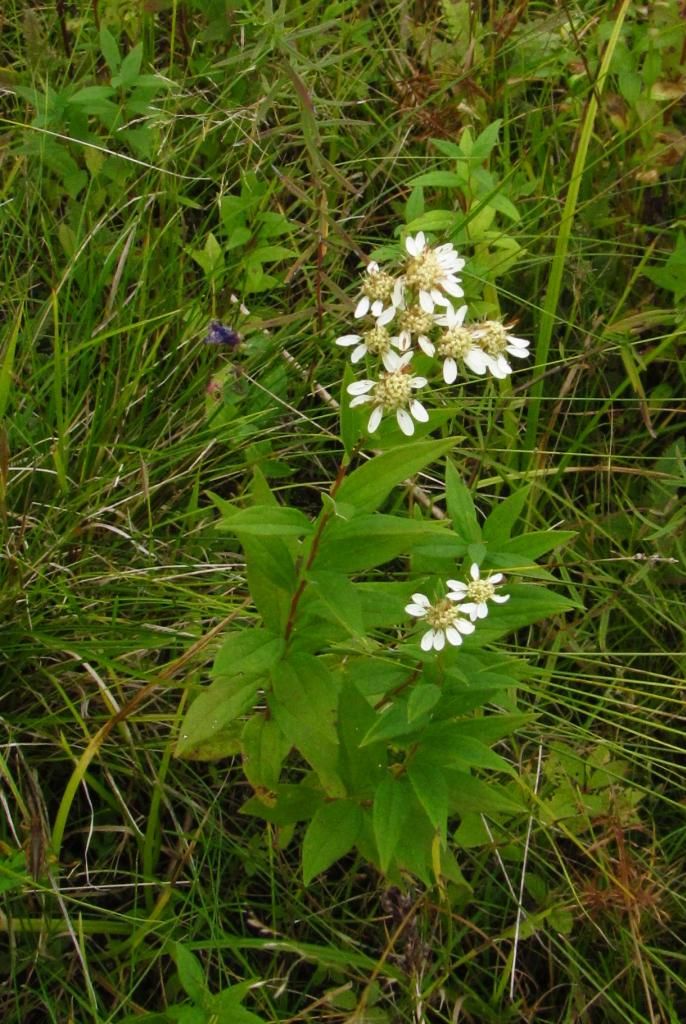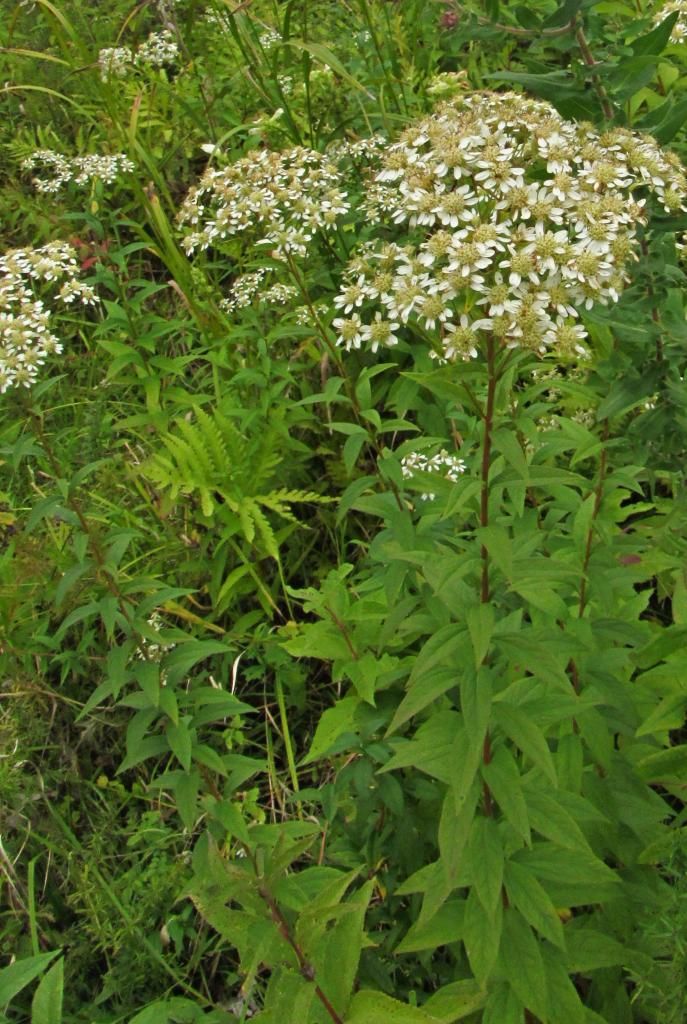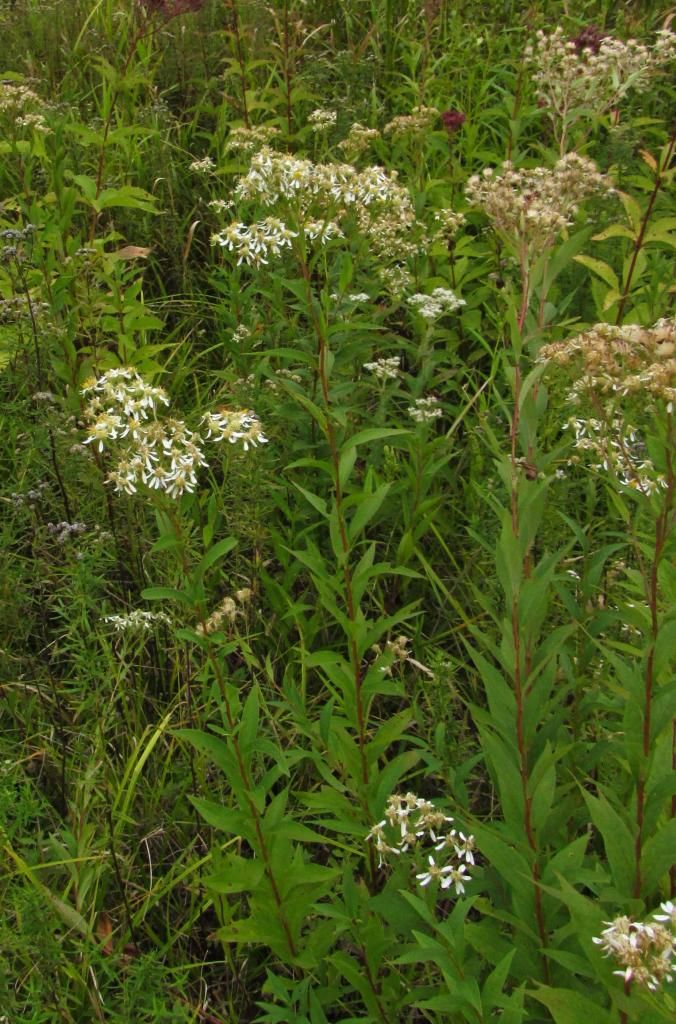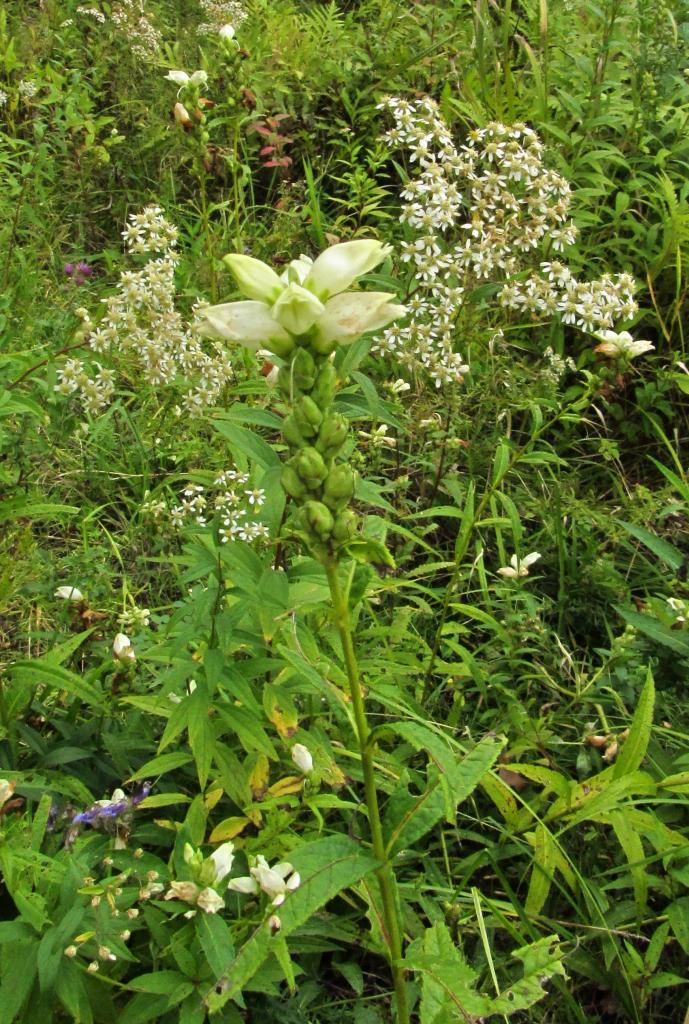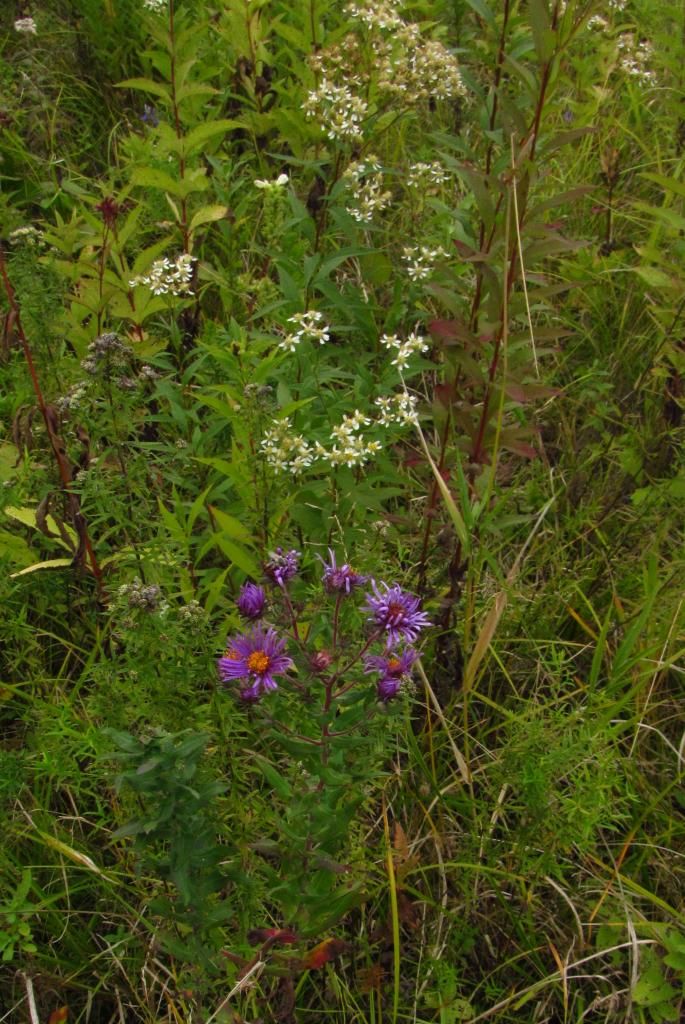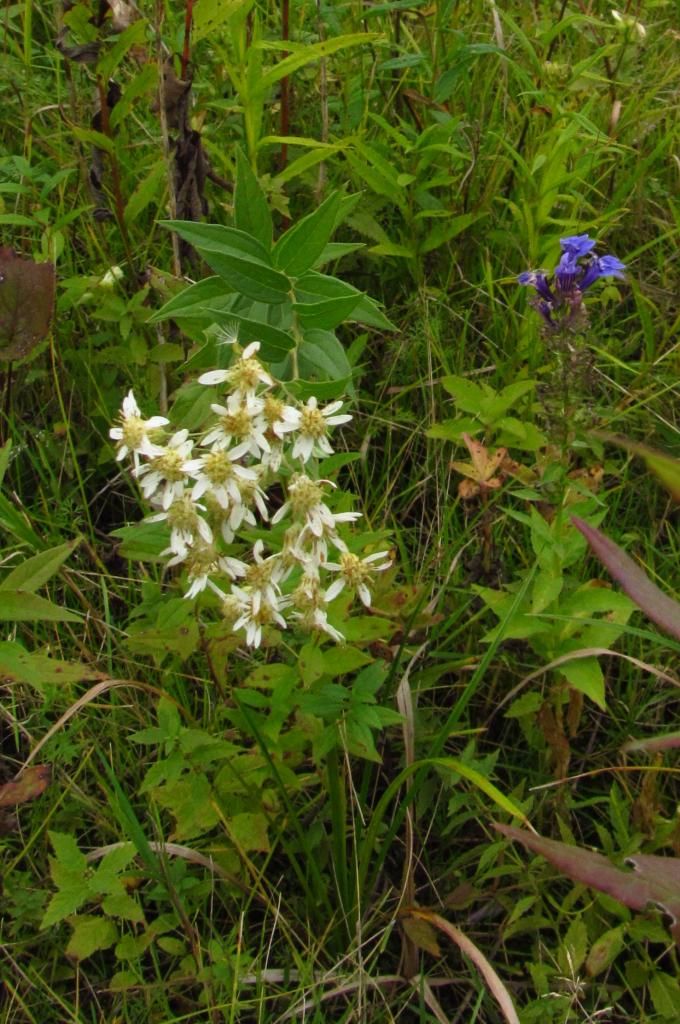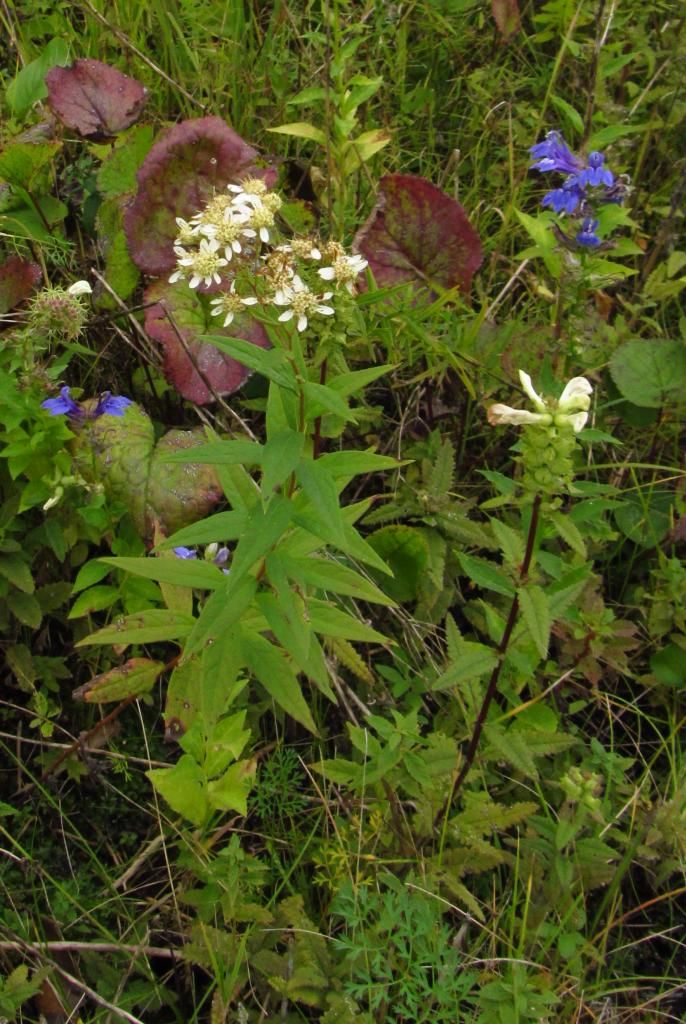I’ve been to Whiterock Conservancy lots of times, but last week was my first visit in the company of naturalist and photographer Eileen Miller. Walking through a seep near the Middle Raccoon River, Eileen showed me quite a few native plants that I’d never recognized before, including this week’s featured wildflower. Flat-topped aster (Doellingeria umbellata) is also commonly known as flat-topped white aster or parasol whitetop. I’ve enclosed several photographs after the jump.
This post is also a mid-week open thread: all topics welcome.
Flat-topped white aster is native to most of North America east of the Rockies. According to the Ontario Wildflowers website, this plant is “fairly easy to recognize due to the flat-topped flower umbel” and “prominent vein pattern on the leaves, which is distinctive.” The Illinois Wildflowers site describes the leaves and flowers in more detail, noting that the plant’s central stem can be “light green, purplish red, or yellowish brown.” Most of the plants we saw at Whiterock had reddish stems.
The common name comes from what is usually “a flat-headed panicle (compound corymb) of flowerheads about 3-12″ across,” but sometims “the cluster is dome shaped instead of flat.”
Flat-topped aster can grow as high as five feet tall. Preferred habitats include “wet to moist sand prairies, moist sandy thickets, soggy meadows and openings in wooded areas, […] fens, and seeps.”
Here some of the flat-topped aster toward the right side of the photo has gone to seed. The seeds spread mostly by wind.
According to the Illinois Wildflowers website, a wide variety of insects and some other animals use flat-topped aster as a food source.
The nectar and pollen of the flowerheads attract long-tongued bees, short-tongued bees, wasps, flies, butterflies, beetles, and other insects. The foliage, plant juices, roots, and other parts of Flat-Topped Aster and other asters are eaten by many insects. The caterpillars of an uncommon butterfly, Chlosyne harrisii (Harris’ Checkerspot), feed on Flat-Topped Aster specifically. Other insect feeders include caterpillars of the moths Acrocercops astericola, Astrotischeria astericola, and Carmenta corni (Aster Borer Moth); see the Moth Table for other moth species that feed on asters. Asters are also host plants of Macrosteles quadrilineatus (Aster Leafhopper), various aphids (primarily Uroleucon spp.), the plant bug Plagiognathus cuneatus, the lace bugs Corythucha marmorata and Galeatus spinifrons, the leaf beetles Microrhopala excavata and Exema canadensis, caterpillars of the butterflies Chlosyne nycteis (Silvery Checkerspot) and Phyciodes tharos (Pearl Crescent), larvae of Calycomyza humeralis (Aster Leafminer Fly), and larvae of small flies in the Tephritidae (Paroxyna albiceps, Tomoplagia obliqua, & Trupanea actinobola). Some vertebrate animals also feed on asters occasionally. The Ruffed Grouse and Wild Turkey feed on the seeds and foliage, while such songbirds as the Swamp Sparrow and Eastern Goldfinch also eat the seeds. The White-Tailed Deer and Cottontail Rabbit browse on the foliage; cattle, sheep, and other domesticated farm animals also browse on the foliage.
The stunning wildflower in the foreground here is white turtlehead (Chelone glabra), surrounded by flat-topped aster.
I am not good at telling the asters apart, but the purple aster in the foreground of this photo may be New England aster.
This flat-topped aster is growing near great blue lobelia (Lobelia siphilitica), which also favors swamps or wet ground.
I can’t remember the name of the white flower near the lower right of this picture. It has nearly finished blooming, but the flat-topped aster and blue lobelia are going strong. UPDATE: It’s Swamp lousewort (Pedicularis lanceolata).

